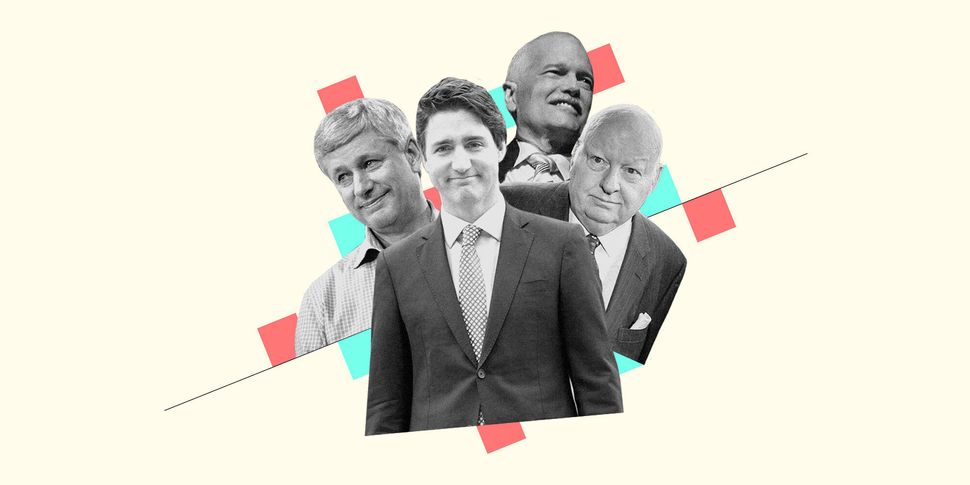
It was a decade of difficult, sometimes painful change in Canadian politics. One that forced politicians and those who watch them closely to reckon with uncomfortable truths, from the threat of homegrown terror to Canada’s shameful treatment of its Indigenous people.
We saw political stars rise and fall, at times in tragic ways, as others grappled with complex questions of power and privilege.
The period between 2010 and 2020 begins and ends much the same — with a minority government, though with different parties at the helm. In between, Canada celebrated its 150th birthday; saw the publication of the Truth and Reconciliation Commission’s report on the legacy of residential schools; mourned the lives of six men shot and killed at a Quebec City mosque; and was forced to once again confront disproportionate rates of violence against Indigenous women, girls and 2SLGBTQQIA people with the release of the national inquiry’s final report.
Here are some defining moments that shaped Canadian politics in the 2010s, in no particular order:
Harper beats back ‘contempt’ and an ‘Orange Wave’ to win majority at last
2011

It was a strange series of events when the government was found in contempt of Parliament, only to be rewarded with a coveted majority mandate weeks later.
In the spring of 2011, 156 opposition MPs teamed up on a vote of no-confidence that brought down Stephen Harper’s second minority government. The dramatic move came days after a House committee found Harper’s government in contempt — a historic first in Canada — for refusing to divulge details about, among other things, the real costs of its tough-on-crime agenda and plan to buy new fighter jets.
But the gamble would end up benefiting Harper most. After a 36-day election campaign, his Tories captured the majority government that had eluded them in three earlier elections since the party’s founding in 2003.
The election was also notable for the so-called “Orange Wave” that saw the New Democratic Party (NDP) vault to Official Opposition status for the first time federally, largely by winning 59 of Quebec’s then-75 seats.
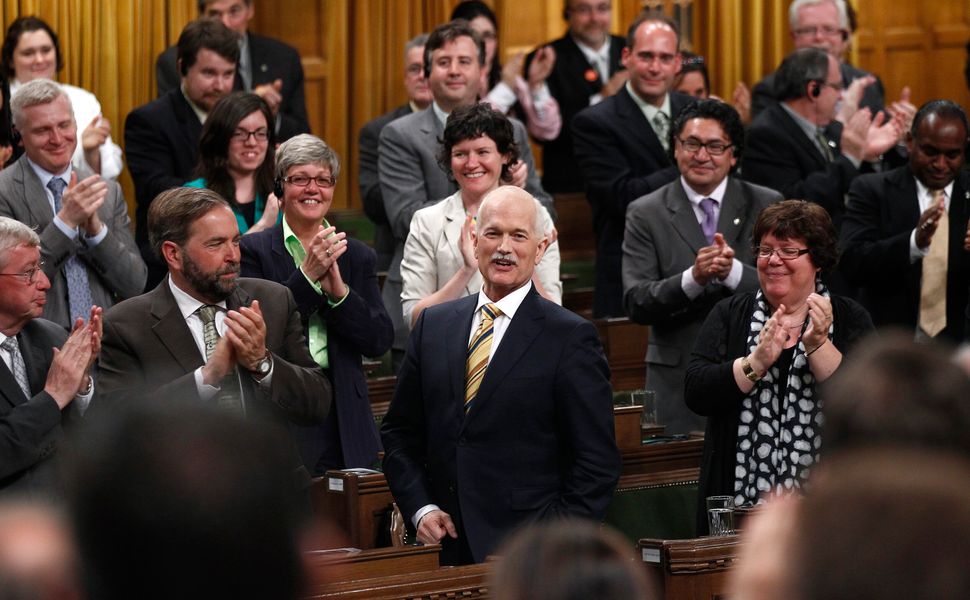
Jack Layton’s breakthrough in his fourth election campaign as NDP leader would cast his party in a new light for the years that would follow — as a credible option for government.
Liberals, once considered the natural governing party, were relegated to a humiliating third place finish and left to wander the political wilderness. Grit Leader Michael Ignatieff even lost his own Toronto seat.
Yet the Harper majority and surprising rise of the NDP would ultimately clear a path to the Liberal leadership for Justin Trudeau, who would rebuild the party in short order.
Indigenous leaders say they are Idle No More
2012
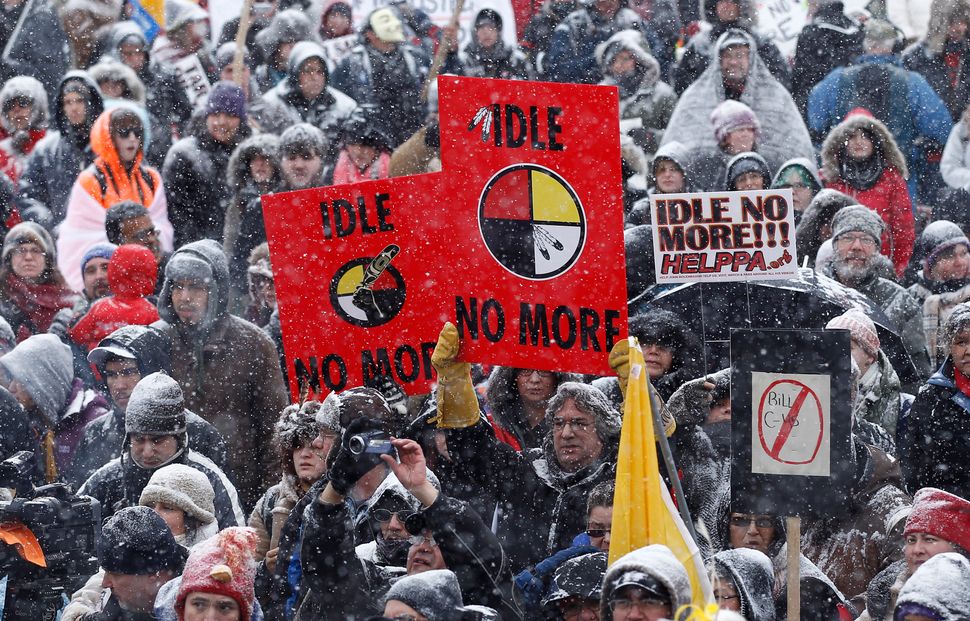
Frustration over the federal government’s treatment of Indigenous rights boiled over in late 2012 with protests across Canada, organized under the banner of Idle No More.
The movement coalesced opposition to Bill C-45, a 430-page omnibus bill tabled by Harper’s Conservative government. Among its many measures, the bill proposed amendments to the Indian Act, the Fisheries Act, and the Navigable Waters Protection Act — including the reduction of federally protected waterways. The proposed changes struck a chord.
Supporters decried the government for inadequate consultations with Indigenous peoples and backing a bill that advocates warned would erode treaty rights.
In one month, four women from Saskatchewan (Nina Wilson, Sheelah McLean, Sylvia McAdam and Jessica Gordon) had taken Idle No More from an event in Saskatoon to nation-wide grassroots protests calling on the government to take Indigenous rights seriously.
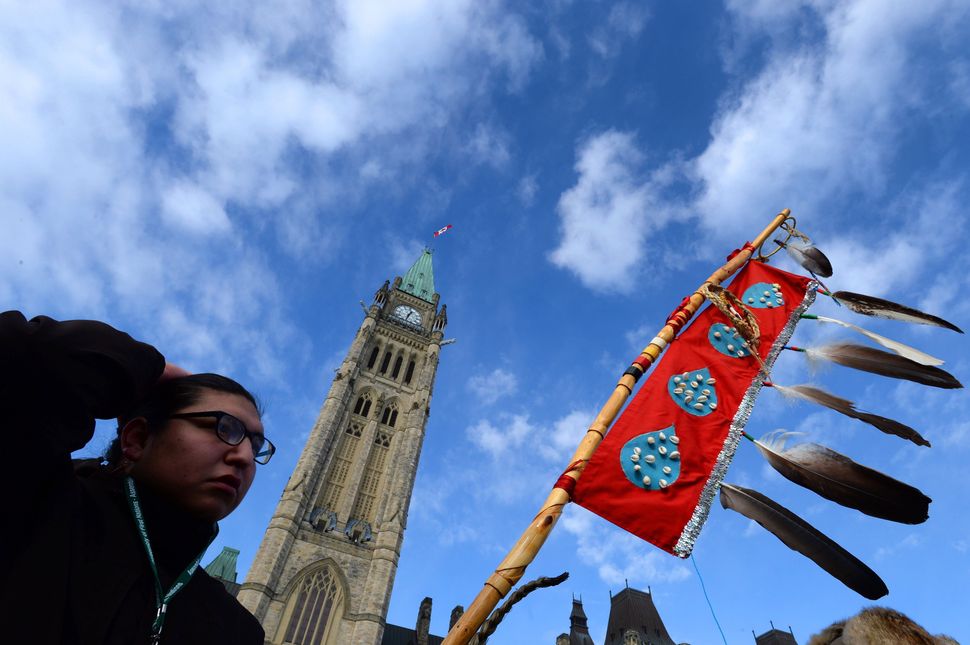
The message was electric. Amplified by social media, it targeted youth and charged young people with challenging a political system that continues to marginalize Indigenous peoples.
Days after the cross-country protests on Dec. 10, 2012, Bill C-45 received Royal Assent. The following day, then-Attawapiskat chief Theresa Spence started a 43-day hunger strike on an island not far from Parliament Hill to draw attention to the substandard living conditions in her northern Ontario community. As national TV cameras focused on Spence, Idle No More rallies continued across Canada.
In its wake, the movement brought renewed attention to Indigenous self-determination — a multi-generational pursuit that reached a new generation of human rights advocates.
Canada’s chamber of sober second thought rocked by expense scandal
2013-2015

It began with a damning auditor general study that found Senate administrators had accepted inadequate proof for taxpayer-funded payouts of some senators’ travel and living expenses.
That study, released in 2012, put into motion a series of events that would drag until the end of 2016 with zero criminal convictions. Though there were no names mentioned in the report, three senators would become the face of a controversy that continues to cast a shadow over the red chamber to this day.
Between 2013 and 2014, the names of senators Patrick Brazeau, Mike Duffy, and Pamela Wallin were almost inescapable in the insular world of Canadian politics. All three were appointed to the Senate by Harper. But the scandal would whittle their allegiance and faith in the party.
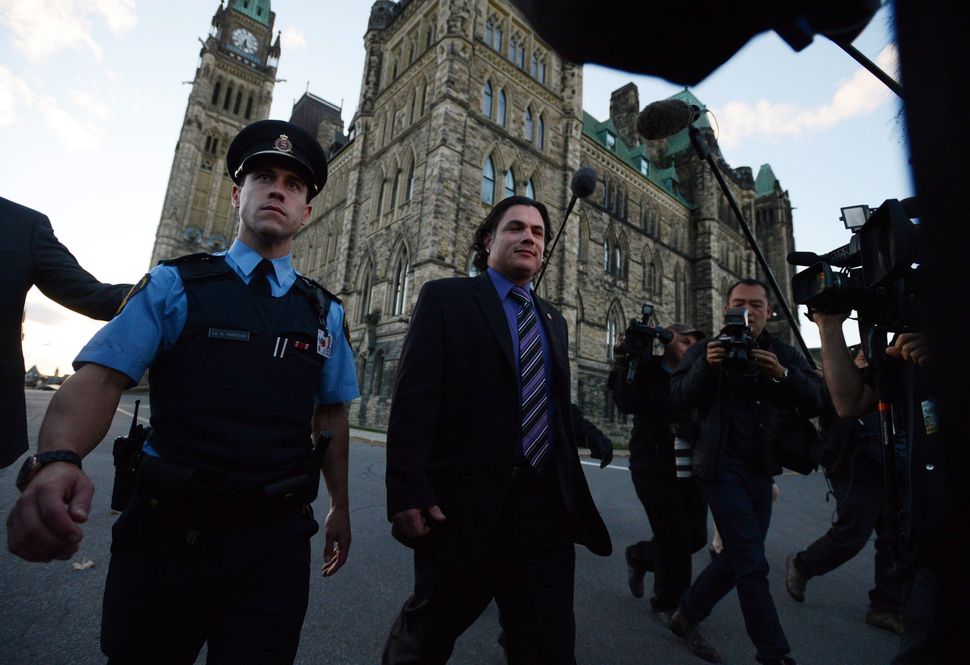
Mac Harb, who was tapped for the upper chamber by former PM Jean Chretien, resigned from the Senate in 2013 amid questions about his expenses.
Explosive speeches during debate over a motion to suspend the three senators kept the story alive. Duffy accused the prime minister’s office of coordinating “monstrous fraud,” revealing that Nigel Wright, Harper’s former chief of staff, had arranged two cheques to cover the senator’s housing expenses and legal fees.
Wallin called the suspension motion “baseless and premature.” The former longtime journalist warned the Conservative leader in Senate, who moved the motion, that he was “sentencing before the trial” and engaging in “unfair and troubling” action.
Brazeau, a former national chief of the Congress of Aboriginal Peoples, claimed he was being “thrown under the bus” over $144.97. He used his closing remarks to address his children directly: “It is very important that you understand that I am not guilty of what some of these people are accusing me of. It is very important that you know that I am not a thief, a scammer, a drunken Indian, a drug addict, a failed experiment or a human tragedy.”
Watch: Senate expense scandal finally ends. Story continues below video.
In November 2013, Duffy, Wallin, and Brazeau were suspended without pay. The scandal compelled Liberal Party Leader Justin Trudeau to expel 32 senators from his caucus the following year, citing an effort to reduce partisanship in the Senate.
Duffy would later be charged with 31 counts of fraud, bribery, and breach of trust. (Harb and Brazeau also faced charges that were dropped in 2016). Though Duffy was ultimately acquitted, his 2015 trial cast a negative light on the inner workings of Harper’s Prime Minister’s Office during a tight election campaign.
Duffy, Brazeau, and Wallin all returned to the Senate in full standing, where they can serve until the age of 75.
Rob Ford goes global
2010-2014
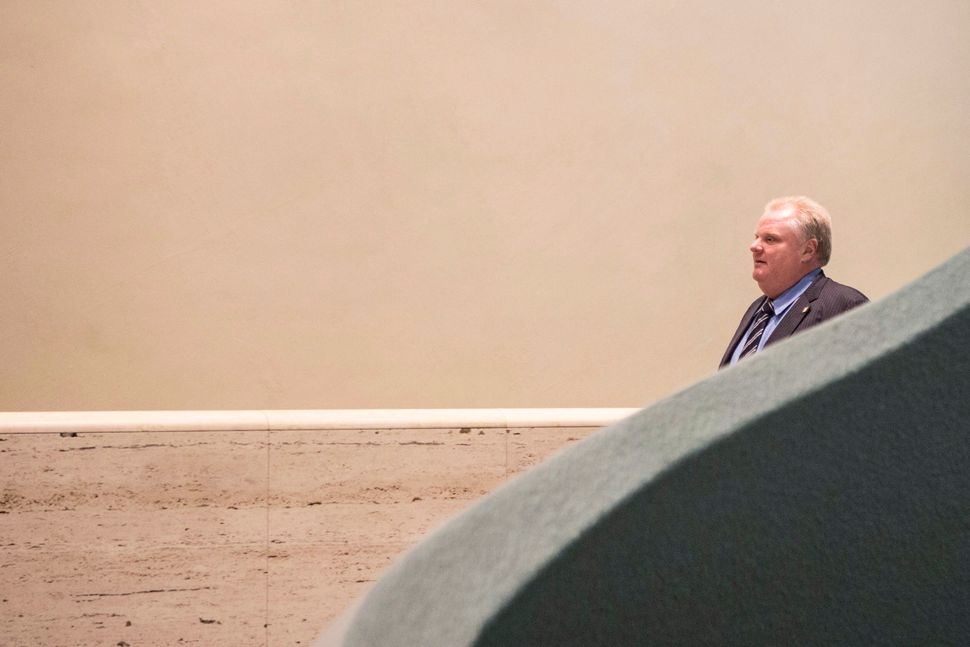
There were few corners of the world in 2013 where people didn’t know Rob Ford, Toronto mayor, smoked crack.
The gregarious incumbent city councillor moved into the mayor’s office at the start of the decade. He was elected with the help of catchy populist pledges to cut government excess (“Stop the gravy train”), to build subways (“Subways, subways, subways!”), and to always respect the “taxpayers.”
Ford was a divisive figure. His supporters embraced him as an antidote to establishment politicians while opponents saw him as a force that cheapened civic discourse. In 2012, more than a decade after he was first elected to public office, his defence in a conflict-of-interest case was that he didn’t read the Conflict of Interest Act.

He would try personally to answer his constituents’ phone calls. According to the Toronto Star, sometimes he showed up on their door steps to address concerns in-person.
His penchant for buffoonery, such as walking crotch-first into a fire hydrant, made him a viral sensation. It would be his substance abuse issues that would make him a routine subject in Taiwanese animations and late-night talk shows after U.S. website Gawker published a story on May 16, 2013 about a video of the mayor of Canada’s largest city smoking crack.
The scandal led city council to strip Ford of some of his key powers. His plans to run for a second term were upended the following year after he was diagnosed with pleomorphic liposarcoma, a rare abdominal cancer.
Ford died of cancer on March 22, 2016. He was 46. But his torch was picked up by his brother Doug, who would go on to become premier of Ontario in 2018.
Canadian International Development Agency melts into foreign affairs
2013
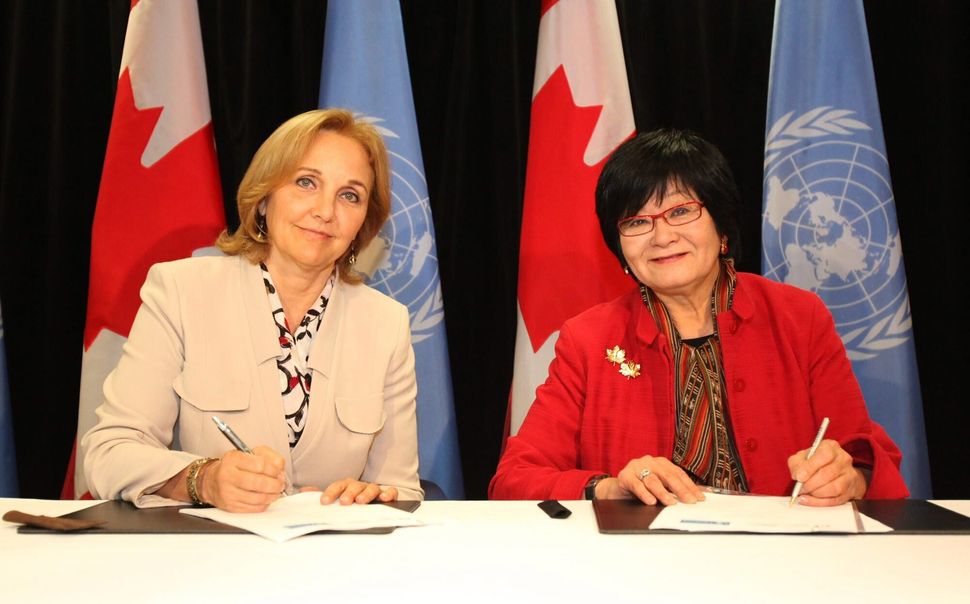
Few people have likely given the amalgamation of the Canadian International Development Agency (CIDA), international trade, and the department of foreign affairs a second thought since the change was announced in the 2013 federal budget.
At that point, CIDA had been an independent agency since its founding in 1968. It had enjoyed decades of independence until the then-Conservative government merged it into Global Affairs Canada. The change would improve Canada’s delivery of international assistance, the government said at the time.
“It’s a big deal because it transformed the way in which we engage the world and more importantly, how we’re seen in the world,” explained David Carment, an international affairs professor at Carleton University, to HuffPost Canada.
The absorption of CIDA into foreign affairs collapsed previously separate silos of decision-making related to non-governmental organizations, humanitarian aid, and development programs. Then-foreign affairs minister John Baird said the streamlined process would make Canada’s contributions to international development “better and more focused.”
More than six years later, Carment suggested Conservatives took a risk that has yet to pay off. “The government was doing a bit of bureaucratic manipulation here in order to deliver or improve on the quality of our development assistance, but it hasn’t resulted in that,” he said. “Most of foreign policy now is about branding and domestic politics.”
The Harper government’s contraction on foreign policy starved Canada’s capacity to conduct “alternative forms of diplomacy,” Carment suggested. He pointed to the closure of the Pearson Centre, a civilian-led not-for-profit peacekeeping training organization with international reach that closed in 2013 after running out of government funding.
Canada’s withdrawal from the international stage under the Harper government set the stage for Trudeau’s 2015 election victory declaration to the world that “Canada is back.” However, Carment said he has yet to see a significant shift under the Liberal government. “We lost a lot of those connections and we never really recovered those connections under Justin Trudeau,” he said.
In 2012, the year before CIDA merged into global affairs, Canada ranked 11th overall on the Commitment to Development Index, a global ranking of some of the richest nations of the world and their financial support for “policies that benefit people living in poorer nations.”
In 2018, Canada placed 17th — a low position, unchanged from the previous year.
An attack on Parliament Hill rocks the country
2014
What began as a quiet fall day in the nation’s capital devolved into surreal chaos on Oct. 23, 2014, when lone gunman Michael Zehaf-Bibeau stormed Parliament Hill. Just moments earlier, Zehaf-Bibeau had killed Cpl. Nathan Cirillo, who was standing guard at the National War Memorial.
Zehaf-Bibeau would meet his demise after exchanging gunfire in Centre Block as MPs took cover in weekly caucus meetings. Then-House of Commons sergeant-at-arms Kevin Vickers has been widely hailed for heroically helping to stop the shooter.
The attack came just a day after Canadian Forces Warrant Officer Patrice Vincent was run down and killed in Saint-Jean-sur-Richelieu, Que. by Martin Couture-Rouleau, a radicalized Quebecer.
In a speech to the nation, then-prime minister Harper pledged Canada would not be cowed or intimidated by attacks on its soil.
“I have every confidence that Canadians will pull together with the kind of firm solidarity that has seen our country through many challenges,” he said. “Together we will remain vigilant against those at home or abroad who wish to harm us.”
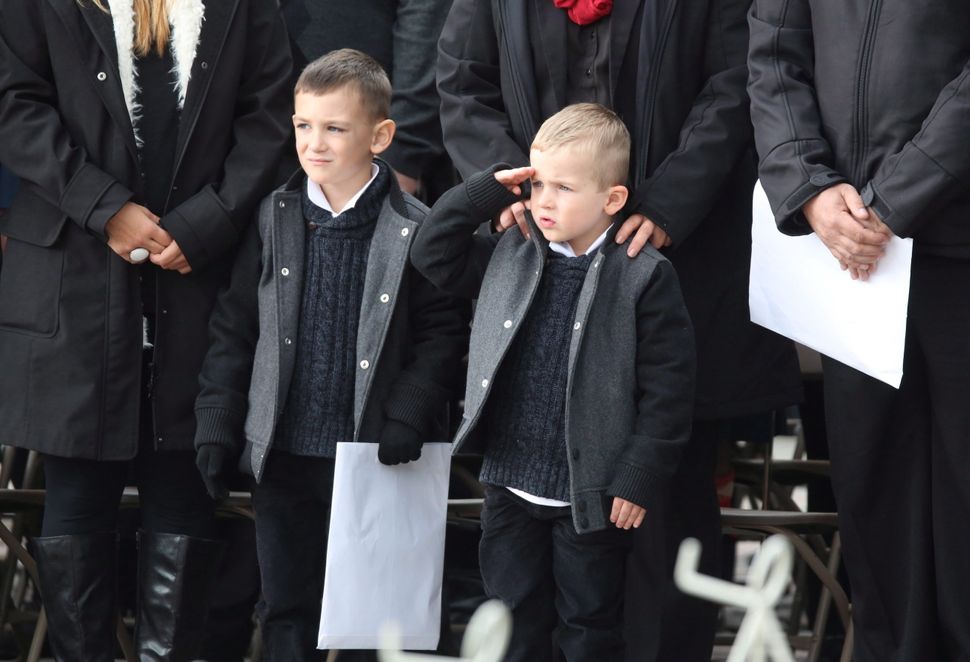
In the days and weeks to come, rivals set aside differences to come together in mourning and resolve. Vickers received an emotional standing ovation in the House. So too did Barbara Winters, the Ottawa lawyer who tried to save Cirillo and reminded him, in his last seconds, that he was “so loved.”
Though time would march on, there was a sense that something had shifted. Sen. Jim Munson told reporters at the time that Canada had “lost its innocence.”
Bullet holes from the attack can still be found on Parliament Hill, grim monuments to that hateful day.
Refugee crisis hits home
2015
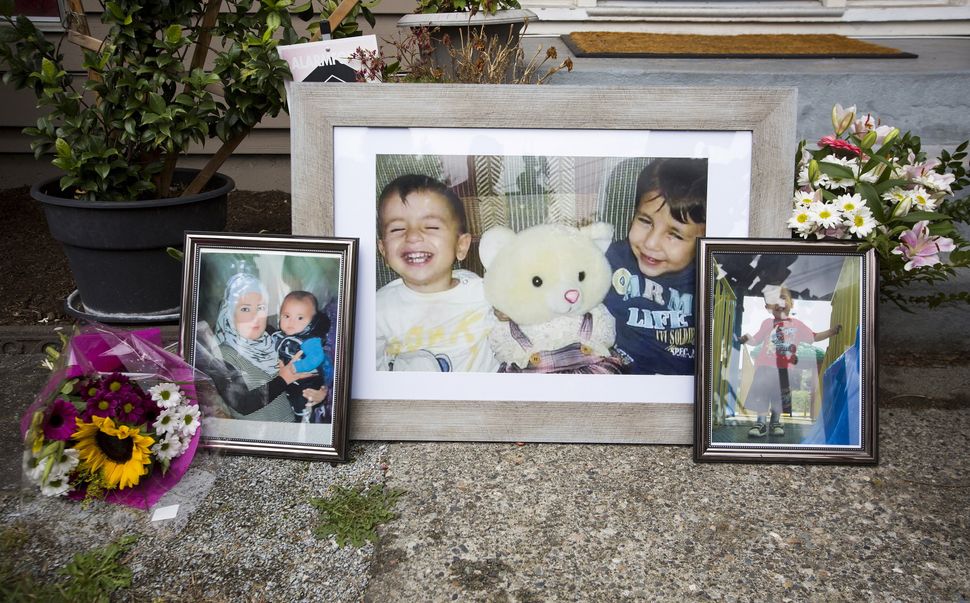
The photographs and videos were arresting. Throughout 2015, broadcast news played images of migrants crossing the Mediterranean Sea in boats and swimming toward the shores of European beaches, hoping for asylum. Later that year on Sept. 2, the lifeless body of three-year-old Alan Kurdi washed ashore on a Turkish beach.
Kurdi became a symbol of the European migrant crisis. His death forced world leaders to trace his journey back to Syria where his family had fled the unmitigated violence of that country’s ongoing civil war. Canada was in the throes of an election campaign at the time.
Watch: Stephen Harper chokes up while speaking about photo of Alan Kurdi. Story continues below video.
Heading into the campaign, the incumbent Conservative government faced scrutiny over having made “cruel and unusual” health cuts for newcomers. The Tories had pledged to resettle 10,000 Syrian refugees over three years. Liberals promised to resettle 25,000 refugees.
After “the boy on the beach,” the political ground shifted under strategists’ feet: Canadians wanted to hear what parties were going to do about the refugee crisis. Voters demanded answers after former immigration minister Chris Alexander said he personally read a letter written from Tima Kurdi, Alan Kurdi’s aunt living in British Columbia, asking for his help in granting her brother and his children refugee status in Canada.
Among major parties, Conservatives did not increase their resettlement promise, but pledged to strengthen screening procedures. New Democrats promised to resettle 10,000 Syrian refugees by the end of the year with 9,000 more accepted annually thereafter. Liberals stuck to their 25,000 promise, with an added $100 million for processing and settlement support.
Kurdi’s death was a tragedy that cast an unfavourable light on the Conservatives’ slow humanitarian response to the Syrian war that started in 2011. The Liberals, elected to a majority government, welcomed 25,000 Syrian refugees to Canada by early 2016.
Donald Trump elected as president of the United States
2016
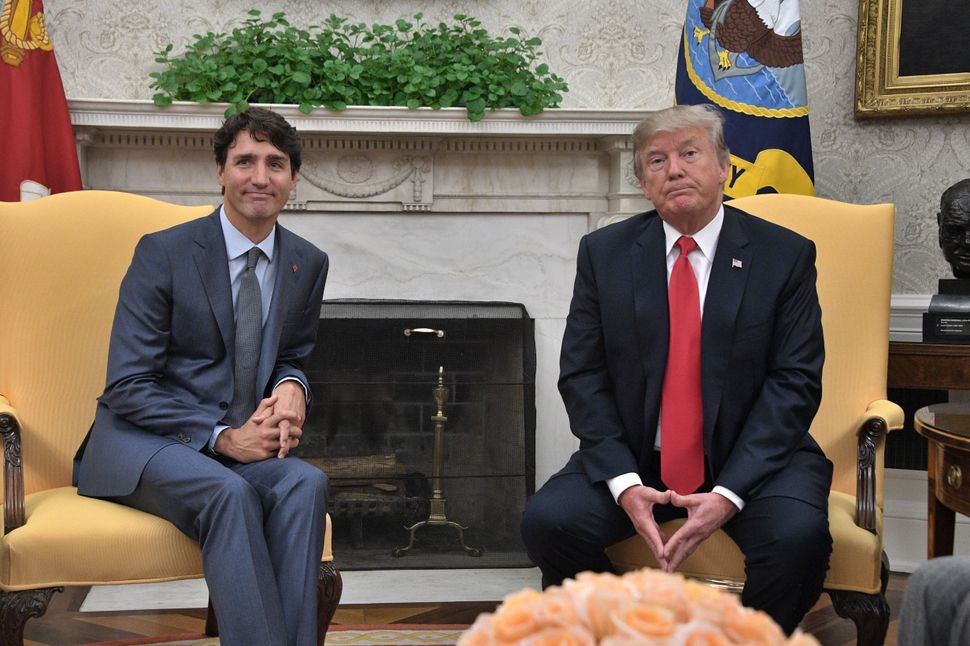
As the saying goes, when the U.S. sneezes, Canada catches a cold. And since Donald Trump’s ascent to the White House in November 2016, Canadian officials have been extra sensitive to the fear of catching a cold.
If Trump hadn’t become president, it’s likely that some of the top members of government — such as former foreign affairs minister Chrystia Freeland and the prime minister’s former principal secretary Gerald Butts — wouldn’t have spent a significant chunk of their time in the Trudeau Liberals’ first mandate on new NAFTA renegotiations.
For the better part of three years, the prime minister has mostly practiced restraint in commenting on his U.S. counterpart’s stream-of-consciousness rants, doing his best to avoid being the subject of a presidential tweet.
Sometimes that didn’t work.
The Harper era ends thanks to a household name
2015
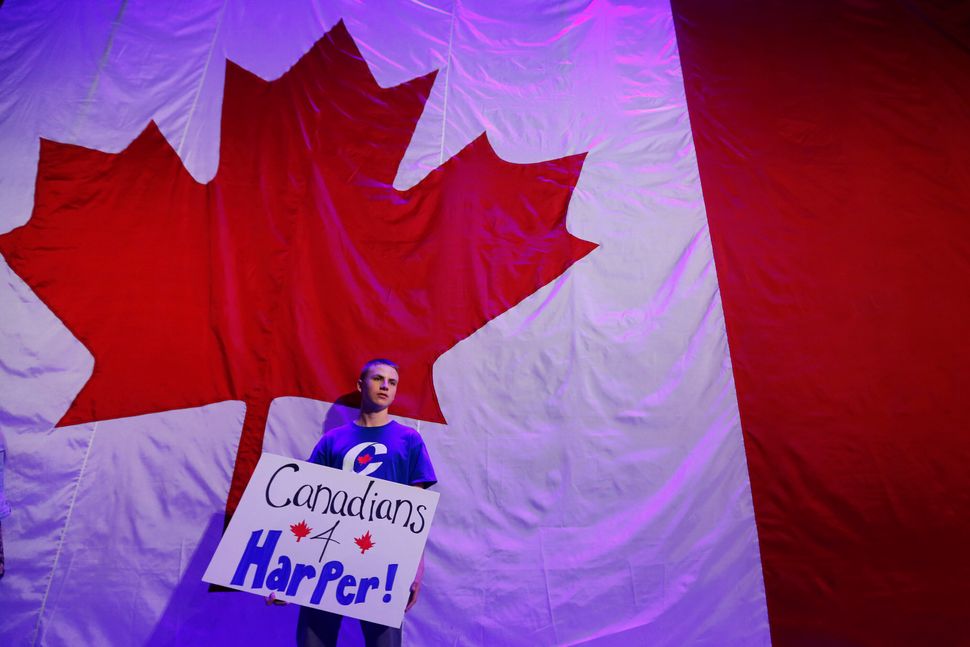
In 2015, the longest federal election campaign since 1872 saw a political scion ride winds of change to end the Harper era and usher in a new one on Parliament Hill.
There were good political reasons for Harper to call a 78-day campaign in August 2015. The marathon race was expected to hurt rival parties who lacked the fundraising prowess of Conservatives and the length of the contest was supposed to give the NDP’s Tom Mulcair and Liberals’ Trudeau — both leading their parties into elections for the first time — plenty of runway to make mistakes.
Instead, Trudeau’s Liberals would tout a platform of bold promises — including an unfulfilled pledge of electoral reform — to make a historic leap from third place to first, capturing a 184-seat majority in an expanded House of Commons. The Liberals held just 36 seats when Parliament was dissolved.
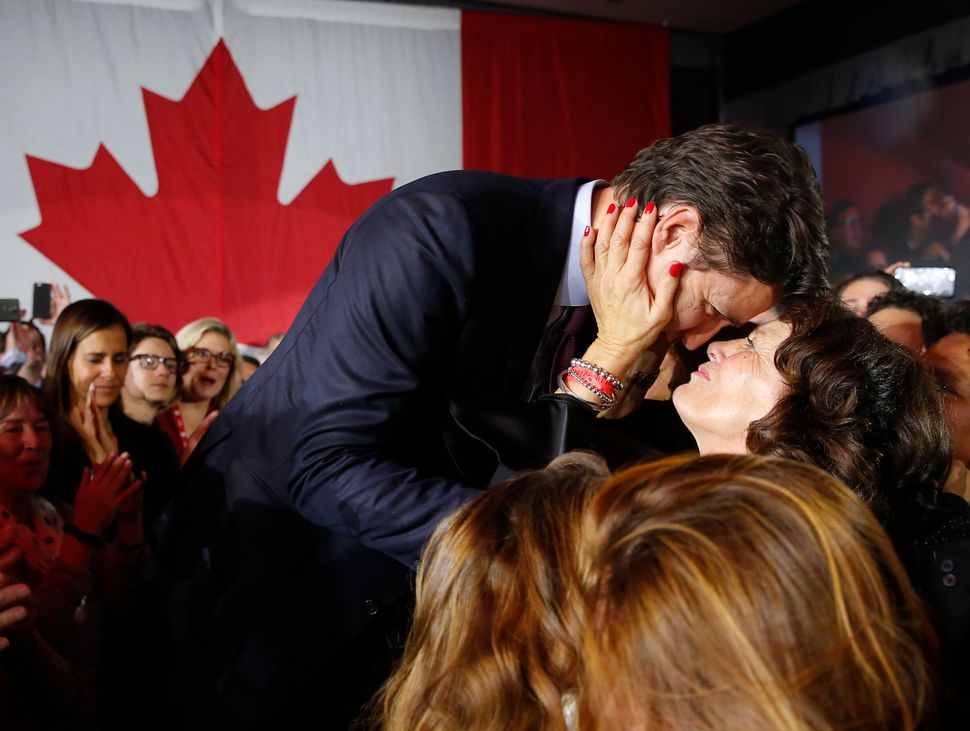
Though the Trudeau triumph was seen by some as a breath of fresh air — “sunny ways,” he promised supporters — it also meant a slew of rookie MPs and first-time cabinet ministers were given the keys to the government. Trudeau had never served in cabinet or even as the official Opposition leader before becoming prime minister.
The election results would ultimately spark two leadership races. While Harper resigned as Conservative leader on election night, the NDP leader pledged to fight on despite his party falling back to its historic status as the third-place party.
Mulcair, who went into the campaign with a narrow lead in public opinion polls, was turfed by party members less than six months later. His exit cleared a path for Jagmeet Singh to become, in 2017, the first visible minority to lead a major federal party.
The SNC-Lavalin affair blows up Trudeau-land
2019

It was a cabinet demotion that just didn’t smell right to pundits and observers. On a cold January morning in 2019, Jody Wilson-Raybould strode into Rideau Hall as the attorney general and minister of justice — an historic first for an Indigenous leader. She emerged the minister of veterans affairs, still a seat at the table but a far less powerful role.
Weeks after the shuffle, Wilson-Raybould quit Trudeau’s inner circle altogether after a bombshell report from The Globe and Mail that, in her previous job, she faced pressure from the Prime Minister’s Office to help Quebec engineering giant SNC-Lavalin avoid a criminal prosecution on fraud and corruption charges.
She later told the House of Commons justice committee that she faced months of sustained, inappropriate pressure from Trudeau and his top aides, including “veiled threats,” to help SNC-Lavalin secure a remediation agreement.
Her stunning testimony sparked Conservative calls for Trudeau to resign and weeks of intense drama. Before long, the prime minister would lose another key cabinet minister, Jane Philpott, and Butts, his top staffer. Wilson-Raybould and Philpott would also be removed from the Liberal caucus.
The Liberals would face steady opposition accusations of trying to “cover up” the truth of what really happened behind the scenes, most of it protected by cabinet confidentiality. The scandal badly hurt Trudeau’s popularity, sparking questions about whether or not the prime minister was as much of a feminist as he had long projected.
In the end, the federal ethics watchdog concluded in a scathing report that Trudeau had acted inappropriately in the matter.
Though he would hang on to government in an election last October, despite losing the popular vote to the Tories, the saga wounded Trudeau in a way few prime ministers have experienced because the damaging allegations came from a member of his own team.
Rivals come together to mourn political giants
2011, 2014
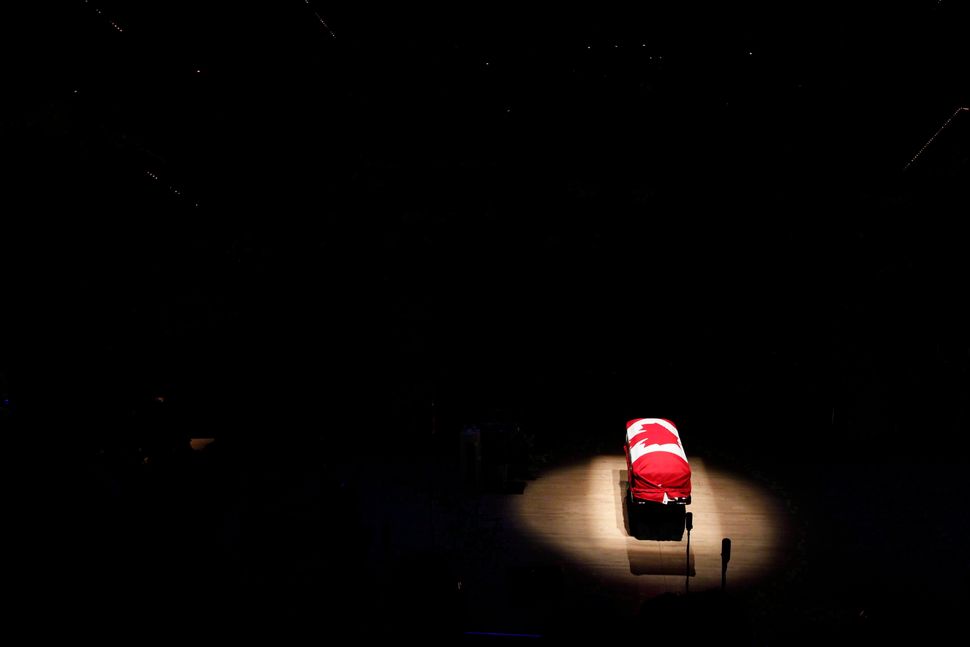
The last decade also saw politicians of all stripes come together to mark the passing of two giants of Parliament from opposite ends of the spectrum.
Former NDP leader Jack Layton died of cancer in August 2011 at the age of 61, mere months after leading his party to its best ever electoral showing and his greatest political achievement.
“My friends, love is better than anger. Hope is better than fear. Optimism is better than despair. So let us be loving, hopeful and optimistic. And we’ll change the world,” Layton said in his final letter to Canadians.
Harper offered the Layton family a state funeral, an honour typically reserved for former prime ministers and governors general. Thousands gathered in Toronto that summer to pay tribute to the late NDP leader and his wife, then-NDP MP Olivia Chow.
Old rivals would set their differences aside, again, in April 2014 after the death of Jim Flaherty. The former finance minister, who served in the powerful role for more than eight years, including during the global economic crisis, had resigned from cabinet just a month earlier.
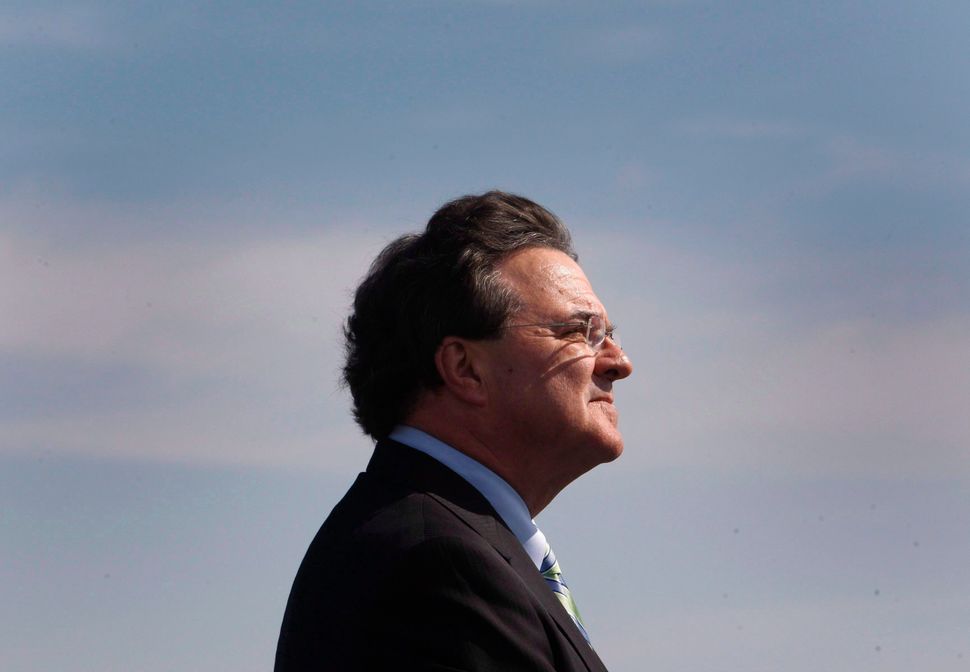
Flaherty died of a heart attack at age 64 after battling bullous pemphigoid, a rare and painful skin disease. At another state funeral in Toronto, where mourners wore green ties and scarves as a nod to Flaherty’s Irish heritage, Harper eulogized his former minister as a “giant,” in spite of his short stature.
“As fiercely partisan as he was, he was also genuinely liked and respected by his opponents, liked by his enemies,” Harper said. “That’s something in this business, something I envy. I can’t even get my friends to like me.”
A number of well-respected MPs also died in office over the past decade, including: Jim Hillyer (2016), Mauril Belanger (2016), Arnold Chan (2017), Gordon Brown (2018), Mark Warawa (2019), and Deepak Obhrai (2019).
Illustration: Rebecca Zisser/HuffPost; Photos: Canadian Press